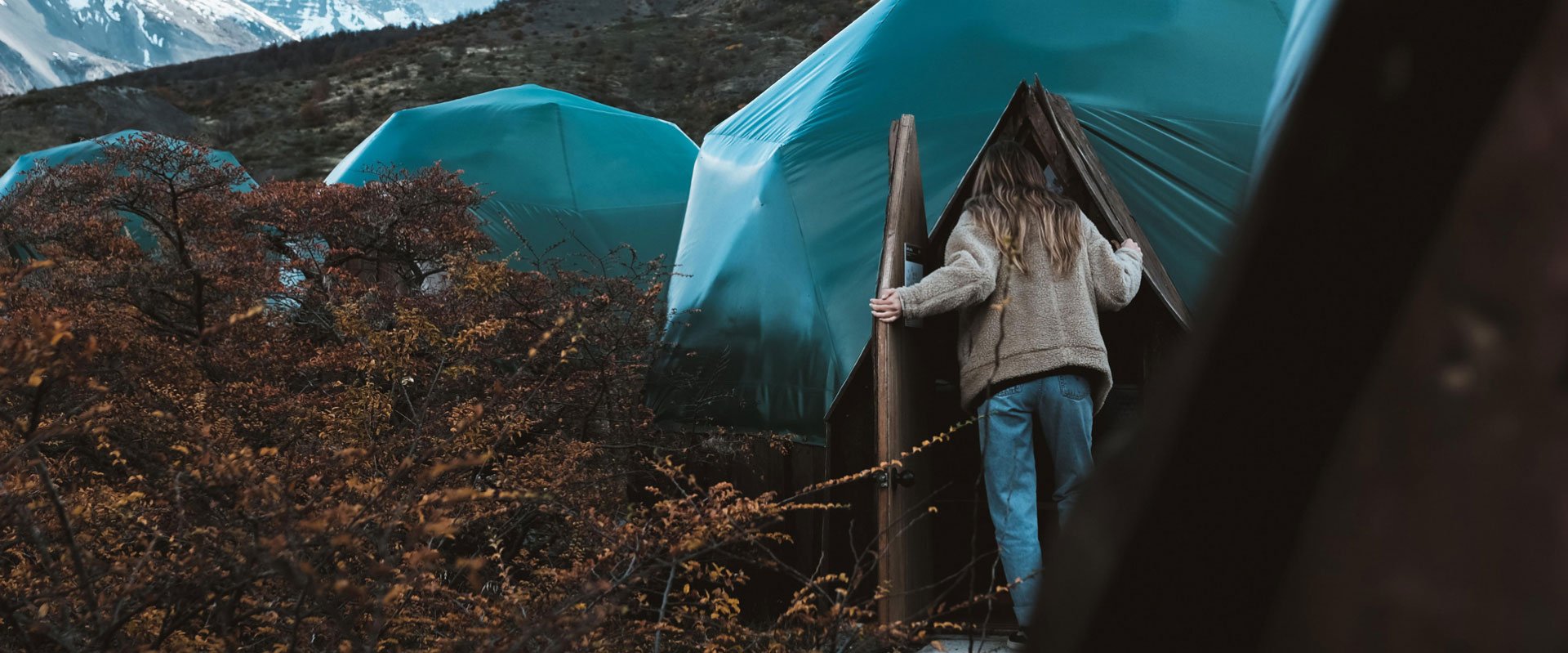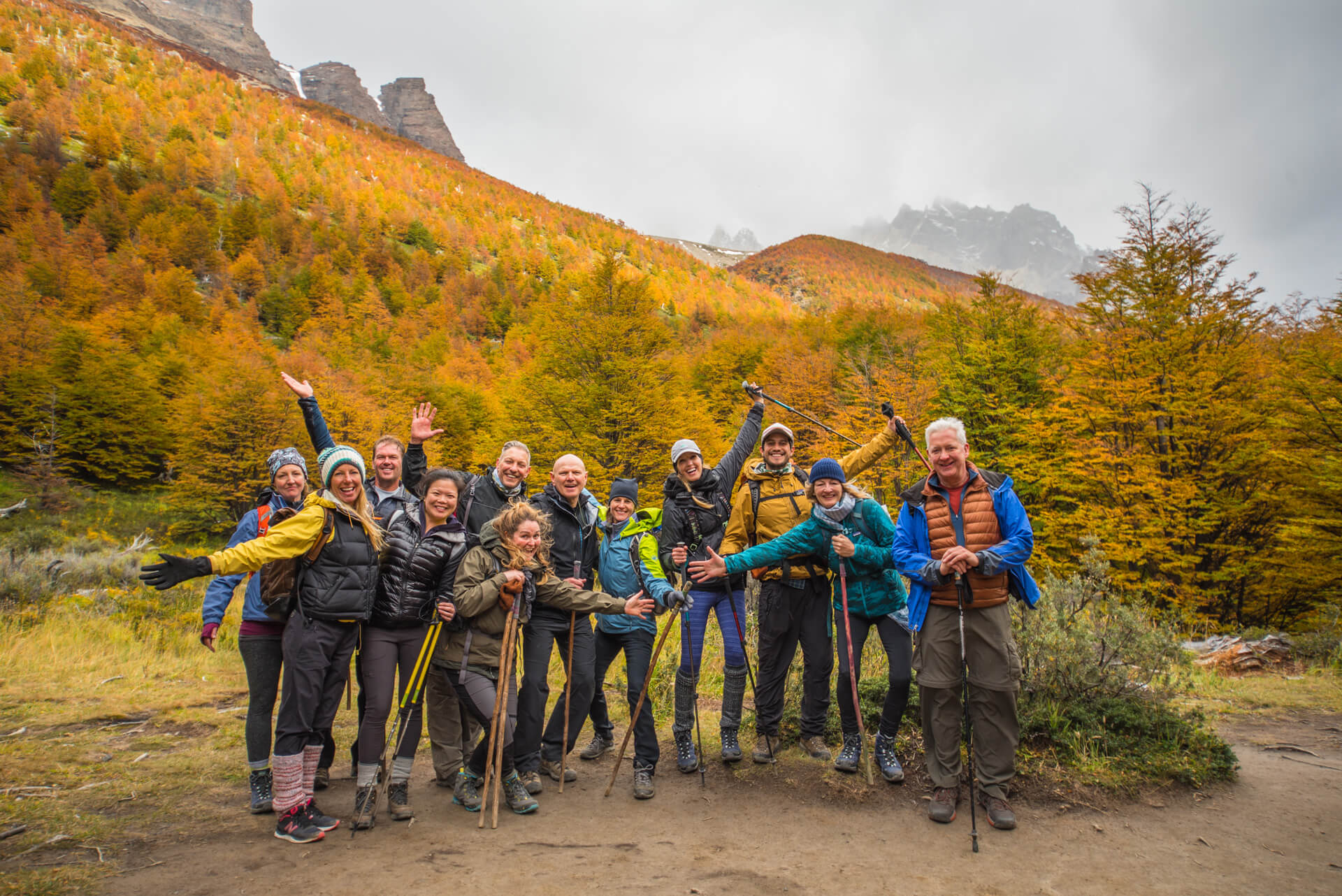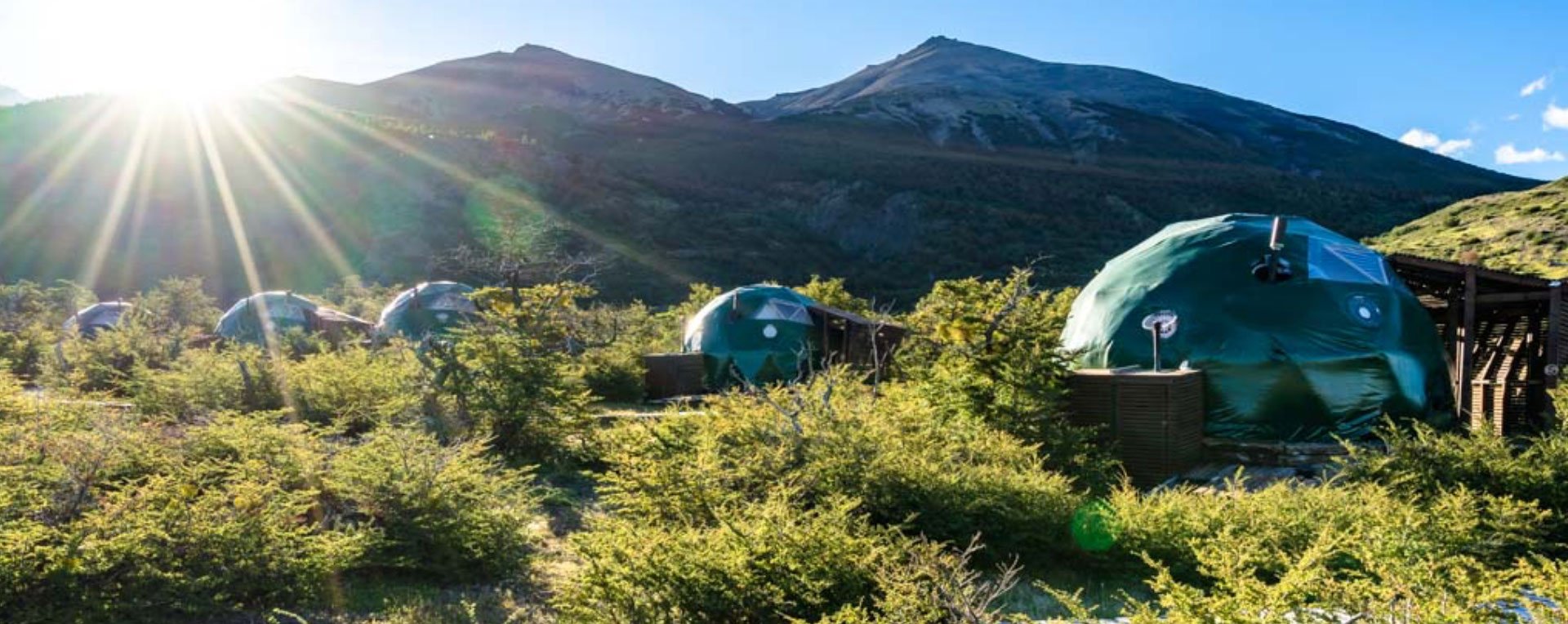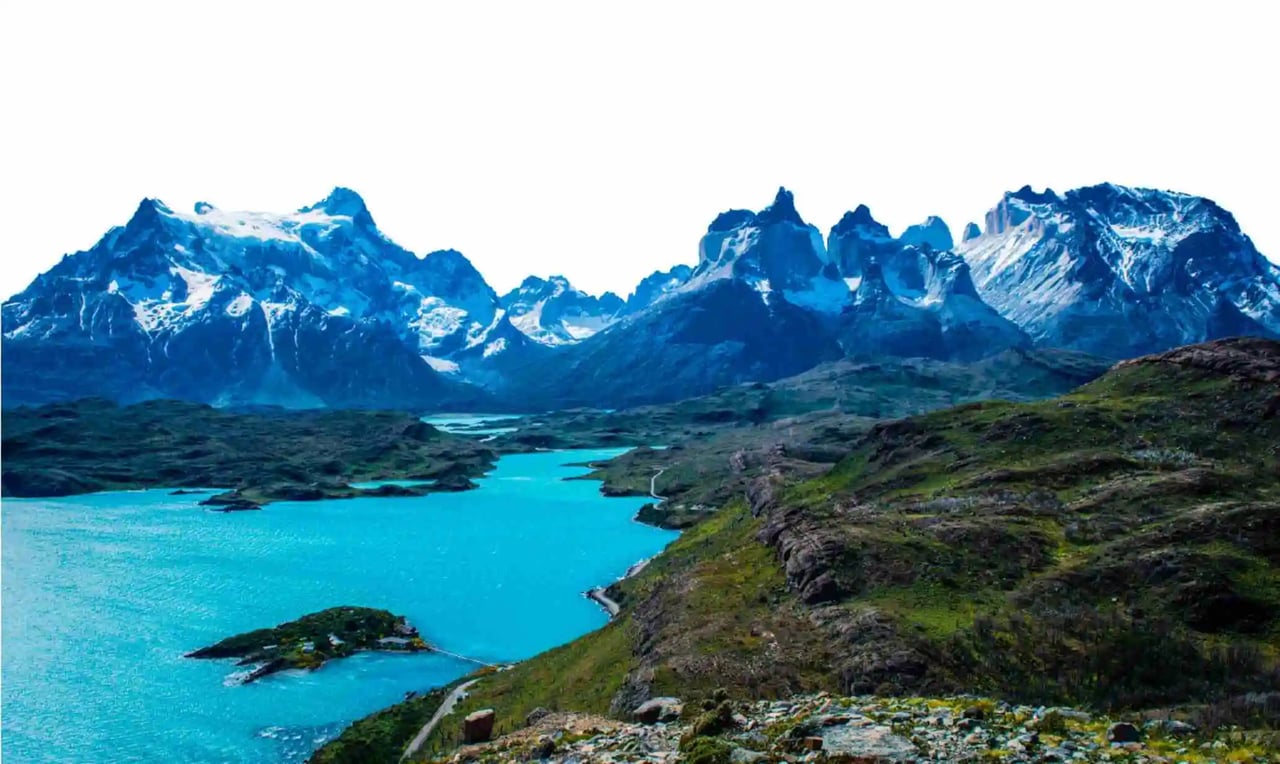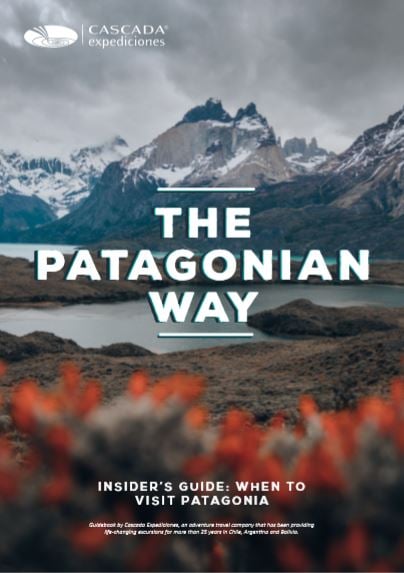“I got a bite!”. We heard Brandon’s booming voice in the distance. Impossible not to leave our fishing rods to go and see what he had caught. Gosh, it was a big one! His biceps were working hard not to lose the rod. Something was shaking on the river. “Take it easy Brandon, tie it back slowly!” Martin, our fly fishing guide, has been fishing in Patagonian rivers for more than 12 years. He knew what he was talking about.
The creature appeared with a noisy splash. A salmon! Brandon had crossed the entire continent hoping to catch it. The salmon flipped frantically, as if he wanted to take Brandon down to the river bottom. We couldn’t believe it. At that time of the year – March – salmons undertake the long journey to their natal rivers to reproduce. Once they do it, they ultimately die. A short and difficult life (2 to 4 years) for them in the Patagonian rivers! Basically, we expected them guys to be weak – if not dead. But the salmon was stronger than Brandon and, in a last move, he escaped to find peace once again in the river bed. Our laughing echoed around the vast landscape. It was a good beginning. We would catch something big soon.
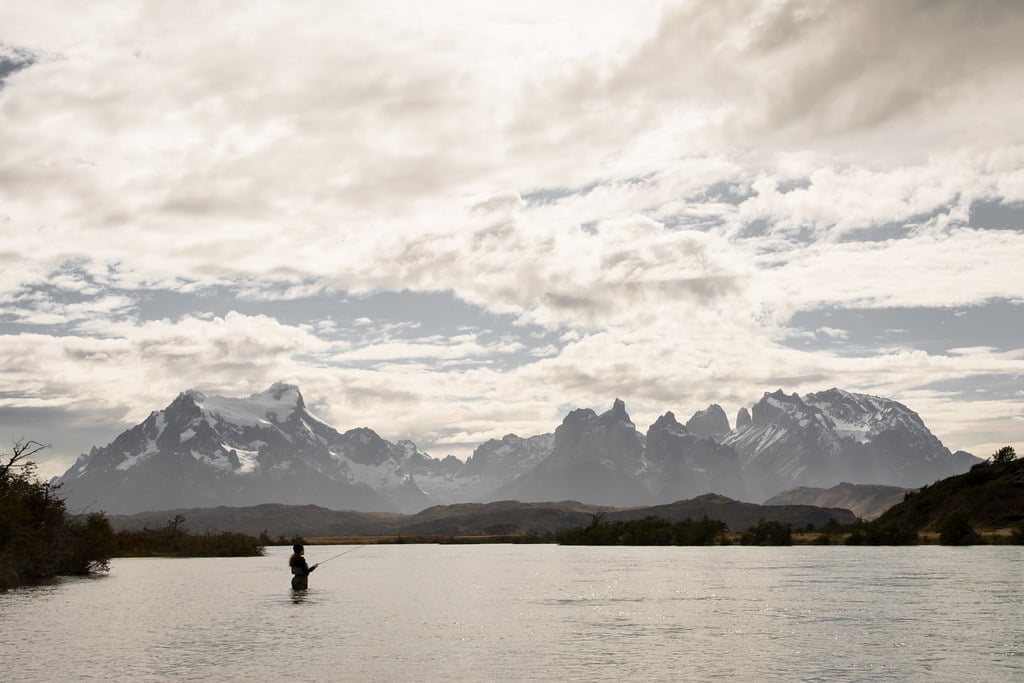 Let's converse with the river...
Let's converse with the river...The pickup truck made its way through huge, silent, mystic Torres del Paine National Park with the ardent voice of Chaqueño Palavecino, a latin singer who is famous here at the end of the world. It was as if the gargantuan Paine mountain range, on our right side, was trying to intimidate us. On our way from EcoCamp to the Serrano river – a 90 minute scenic drive – we became familiar with all the famous peaks of the National Park: the Towers, Almirante Nieto, Los Cuernos and Paine Grande.
“Today, we’re gonna fish with the giants!”
I knew Martin was talking about the mountains. They were indeed like giants, each of them with its own personality. Sarah and Brandon had come from North Carolina to spend some epic (and romantic!) days in Southern Chile. They had experience in fly fishing, far more than I had anyway, so I felt it was a cool opportunity to learn from them. The clouds looked like cotton in the Patagonian sky. There was no wind that day, so we knew we had a special chance to experience fly fishing at its best. The engine stopped as we were facing the Paine Massif. “Here we are guys!” Martin pointed a finger to the river bank. With a length of 38km, the Serrano River finds its very source at the Southern Patagonian Ice Fields, whose blue waters flow to Toro Lake (Lago Toro). Toro Lake (202km2) is no less than the biggest lake of the region, and is considered to be the official start of the Serrano River.
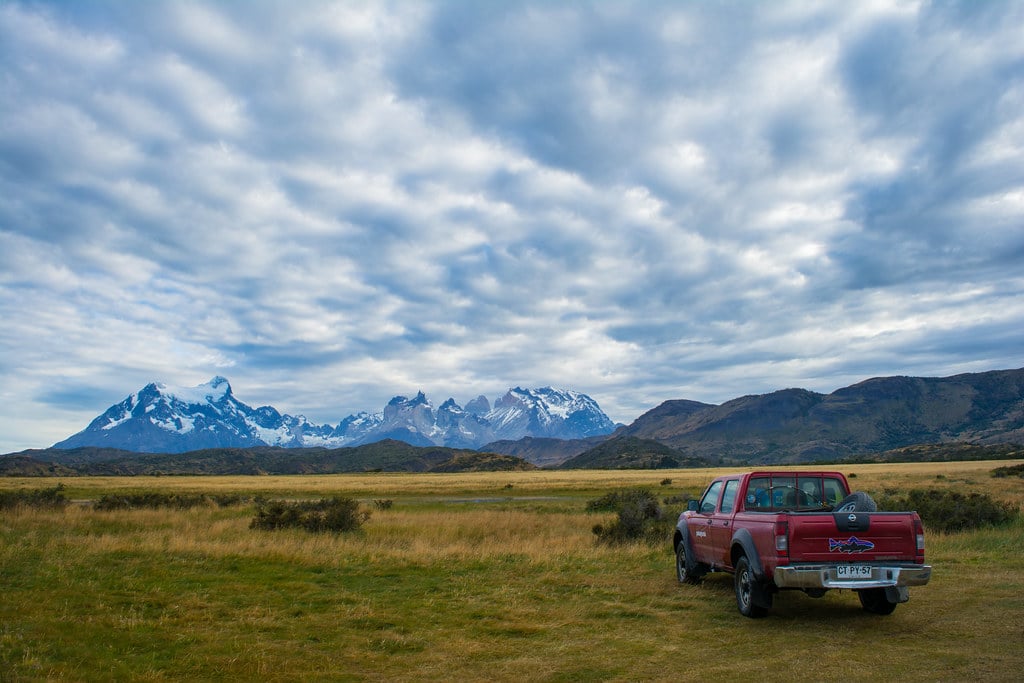 Aaaah, Patagonia and its E.T. clouds...
Aaaah, Patagonia and its E.T. clouds...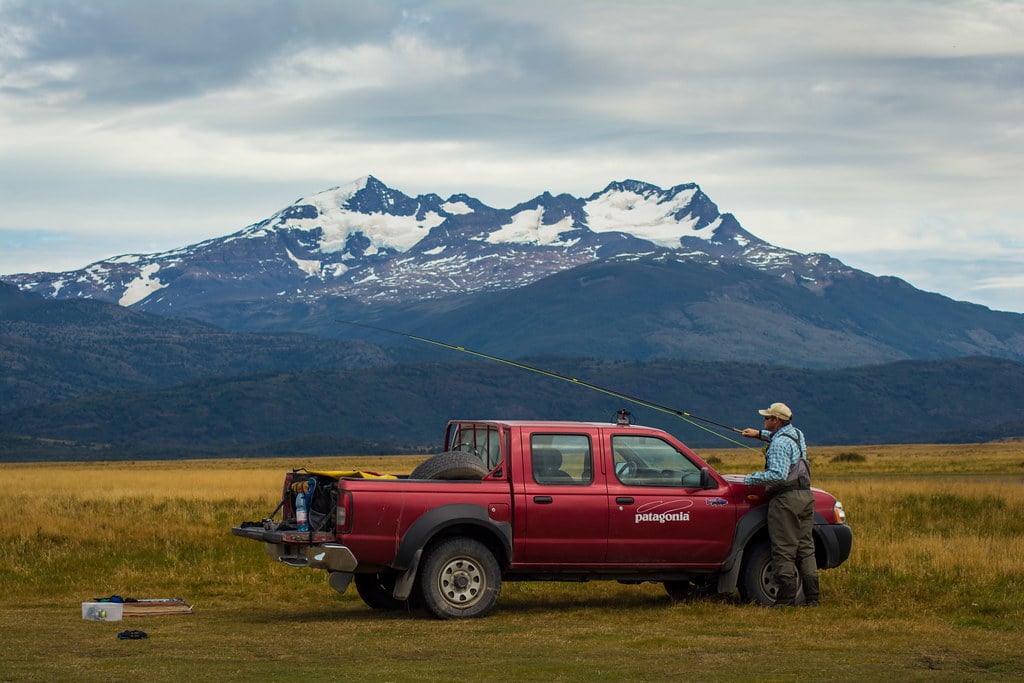 Our guide Martin and his love for the good gear
Our guide Martin and his love for the good gearWe began our Fly Fishing session a few steps away from Toro lake, and Martin did not wait long before unloading his equipment.
In Fly Fishing, catching a fish depends a lot on the gear you’ve got.
Martin introduced us to our state-of-the-art equipment. Our rods were about 3-meters (9 feet) long, as the purpose of Patagonia fly fishing is to cast long distances with (almost) no obstructions. Different rod models suit different needs: the “light” rod (5 weight) is made for fishing average-sized fish (ideal for trout fishing), whereas the “heavy” rod (7-8 weight) is designed for larger fish, such as the salmon (which we were not supposed to catch at all!). Today we would use single handed rods. The fly fishing line was thick and light, strong enough to use permanently, allowing us to cast large flies. According to Martin, the reel matters a lot too, as it ensures optimal rod balance when the reel, rod and line are sized correctly. Martin showed us the complex metal sealed system of the reel, designed to resist any collision with the rocks. No excuse to lose a fish on a bite with such modern gear!
We pulled on our Patagonia waterproof wader, which felt surprisingly light and flexible. How cool it was to be able to walk on the river with such breathtaking scenery! We put on our boots and entered the Serrano River. Gosh, the water was cold indeed!
We stood on the river, ready to fish.
If you’re an amateur like me, you’ll need to know why fly fishing is special. This angling method requires the use of an artificial (and nearly weightless) “fly” to catch fish. It can be done in both fresh and salt water but in the case of Patagonia, expect to fish freshwater trout and salmon. Why is fly fishing awesome? Because it gives the fish a greater chance to escape, unlike traditional fishing which tends to hurt the animal with a heavy hook. Here, the line is light enough for you to entirely feel the fish, without damaging it. Of course, this means that it’s easier to lose the fish when you catch it, making fly fishing a real sport. If you don’t take your time once you catch the fish, then you can say goodbye to it!
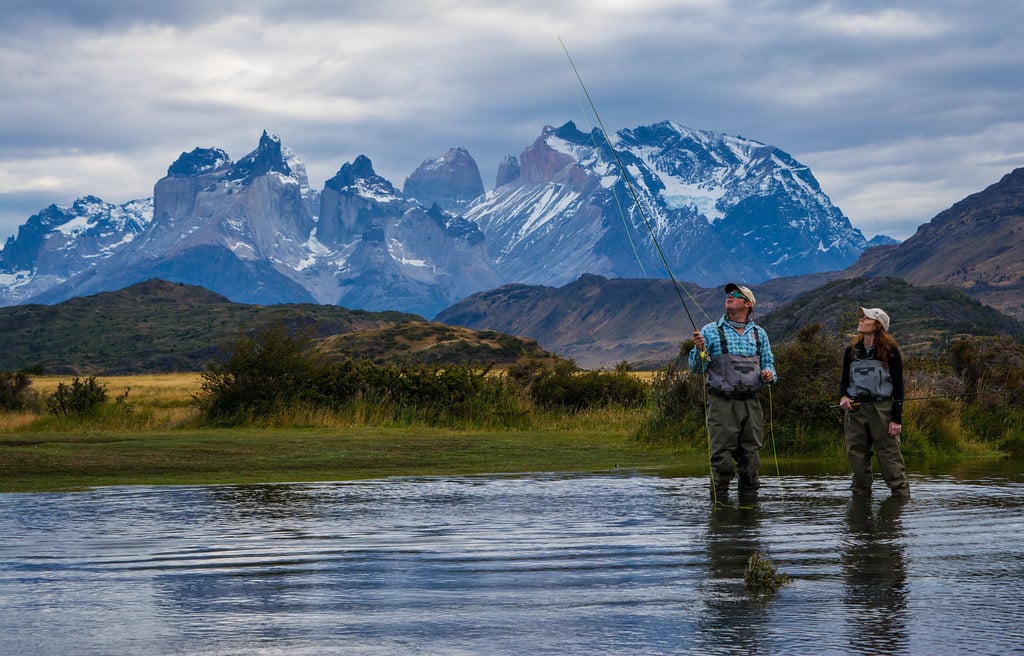 Getting familiar with the rod...
Getting familiar with the rod...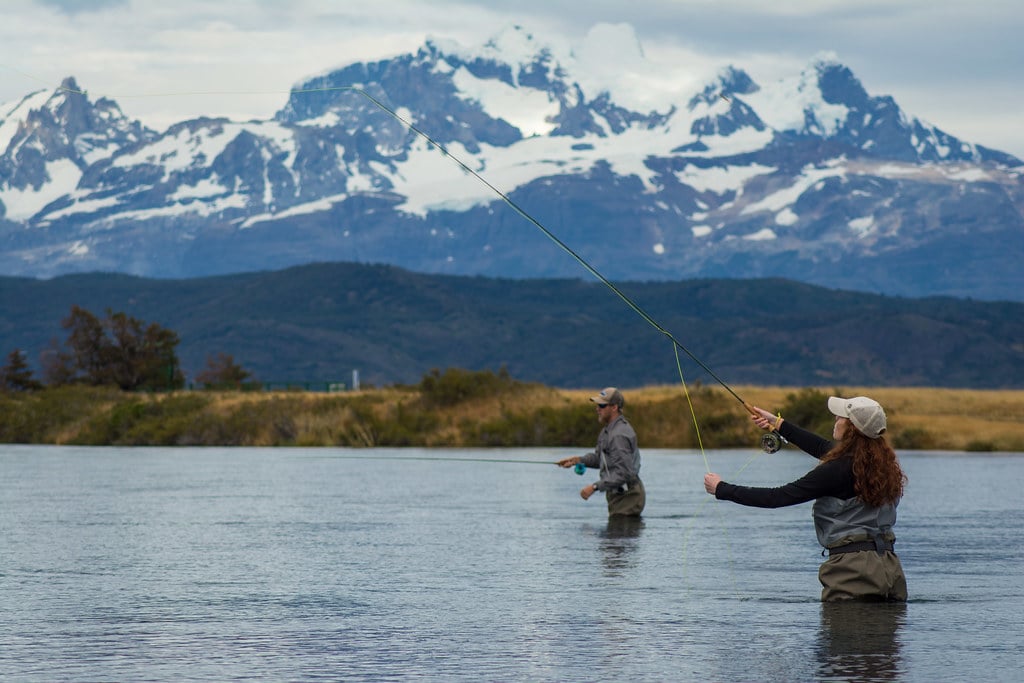 First steps in the Serrano river, with the majestic Balmaceda mountain in the distance
First steps in the Serrano river, with the majestic Balmaceda mountain in the distanceMartin suddenly flicked the fly into the air back over the shoulder, using his forearm to whisk it forward once the line was straight. He repeated the movement and explained his method:
“The aim of the exercise is to store energy to bend the rod tip, and move that energy to the line so that you can cast it across a good distance. You’ll fail if you simply bend the rod and jerk the line forward; the “catapult” method will not propel the fishing line far enough. The rod has to act as a lever so that your hand, as you cast the line, should move of about a foot through the air.”
He used the rod as a lever and dropped the fly onto the water.
We quickly imitated Martin, and chose our space to fish freely. Martin calmly helped us improve our techniques. The typical backwards and forwards cast (even though it looks rather complicated at first) is not the hardest part. Once I dropped the fly onto the water, I realized moving the fly on (or beneath) the water was not easy at all. I started thinking like a fish: if I wanted them to take the fly seriously, the “fake fly” had to appear as real as possible. I realized it had to land smoothly on the water, so I’d better cast with patience. There was some current, so I picked up the line a few times before being able to maintain the fly placid.
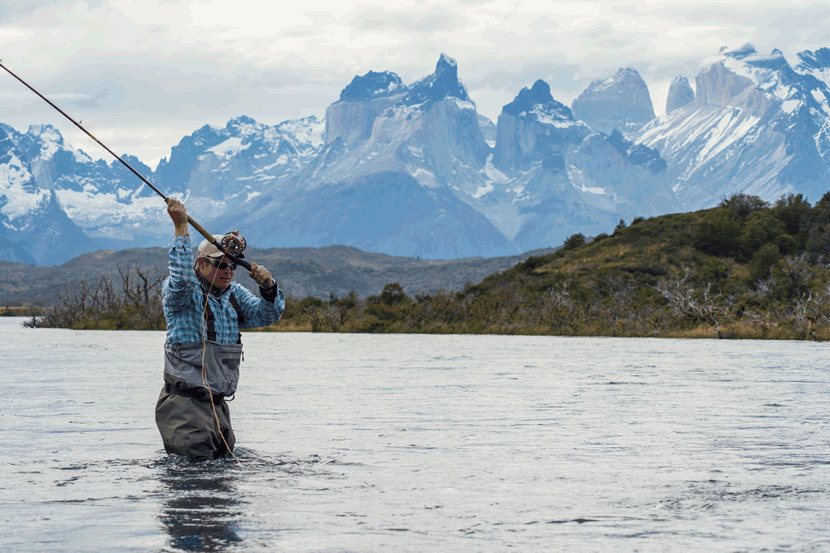
The “I got a bite!” episode happened as we were warming up. Martin laughed loudly, as he knew it was mere coincidence if the salmon had bitten. Typical salmon in Patagonia is the Chinook salmon, the largest of all the Pacific salmons (it can weigh up to 35 kilos in Patagonia)! Best time to fish salmon was in the heart of summer (November to February), and we would better hope to catch trout at that time of the year (mid-November to mid-April). Martin admitted even though salmon is the most impressive catch you can make, this fish is not native from Patagonia. We thought about how proud we’d be to catch a trout, and kept making the backwards and forwards stroke to operate the rod as a flexible lever. It started to be really fun!
We were totally alone (with the fish).
We changed our location, and followed the watercourse with Martin’s vehicle. Rod carriers were attached to the car to allow us carrying the rods from a place to another. We had a good feeling. We tried to keep the concentration on the line, even though it was impossible not to admire the incredible mountains in the distance. Our surrounds was astonishing; had we reached fishing paradise?
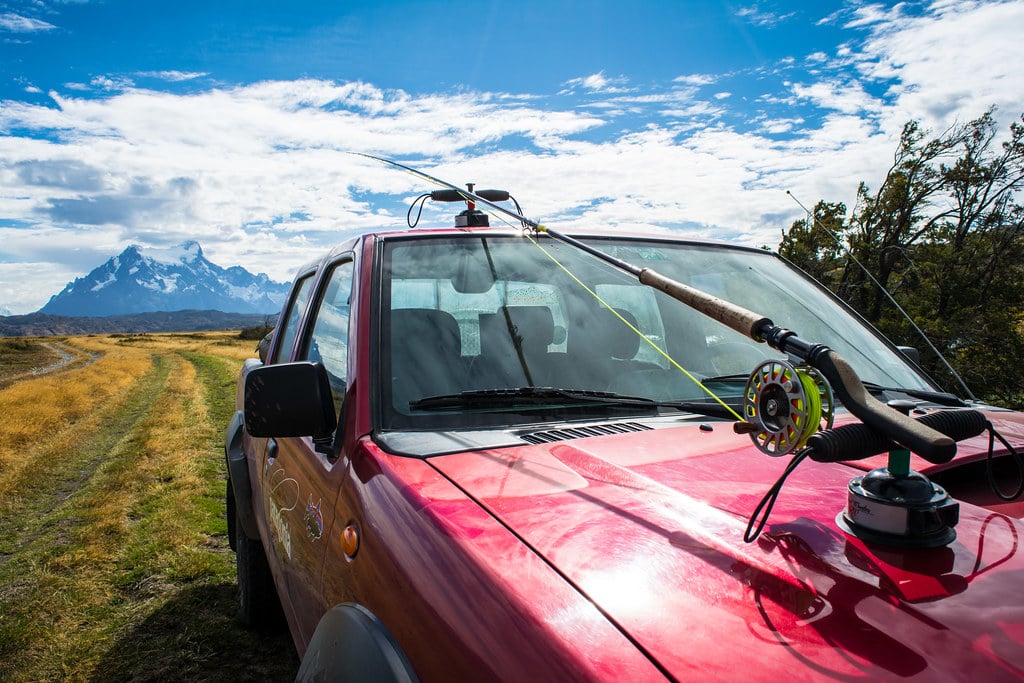 Best way to carry the rods from a place to another!
Best way to carry the rods from a place to another!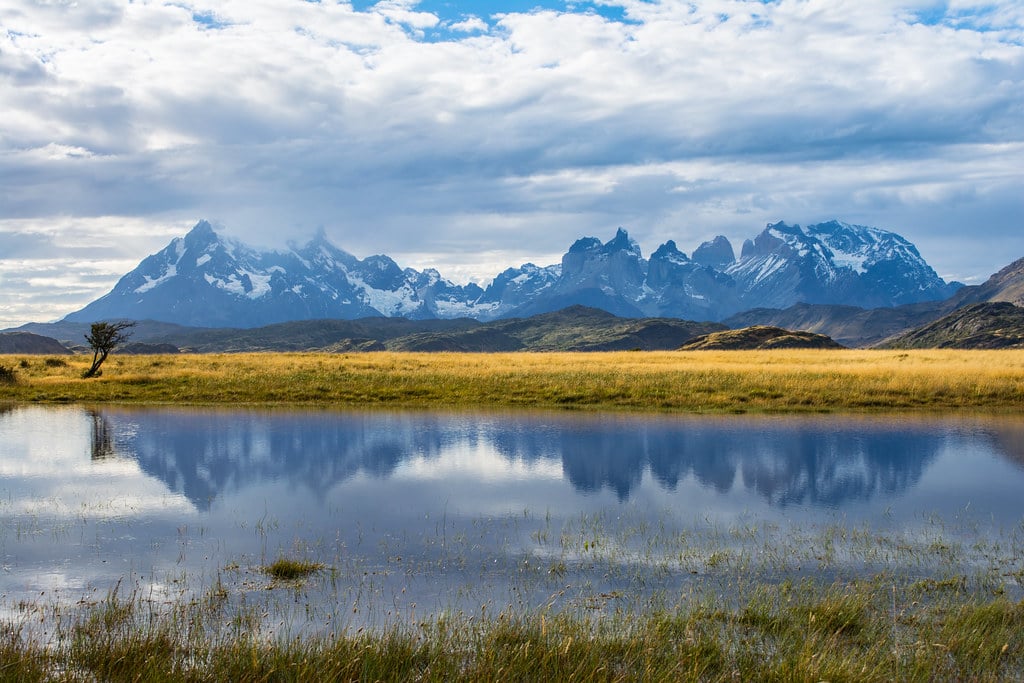 The breathtaking Paine mountain range as seen from the Serrano area
The breathtaking Paine mountain range as seen from the Serrano areaThe water up to our hips, we kept dropping the fly, playing with the current, making one attempt after the other. The fishes did not strike yet. The exercise was incredibly relaxing, so that I felt I was in a kind of active meditation. I could barely think about a better connection with the river, the sky and the mountains. Fly fishing was teaching me patience, and it was so good to be patient in that beautiful place.
“Hey amigos, up for a beer?”. That was an invitation we couldn’t refuse! Martin had used the river as a fridge, and had plentiful snacks at the river’s edge. The flowing water lulled us as we were eating, and I was glad to get to know my companions better. We felt alone in the world, in the optimal location to get together. Martin told us more about his passion:
“I like fly fishing because we release what we catch. It is more respectful for the fish, as the flies do not wound them, rather, it leaves them with a tiny piercing. I consider fly fishing to be the most sustainable form of fishing.”
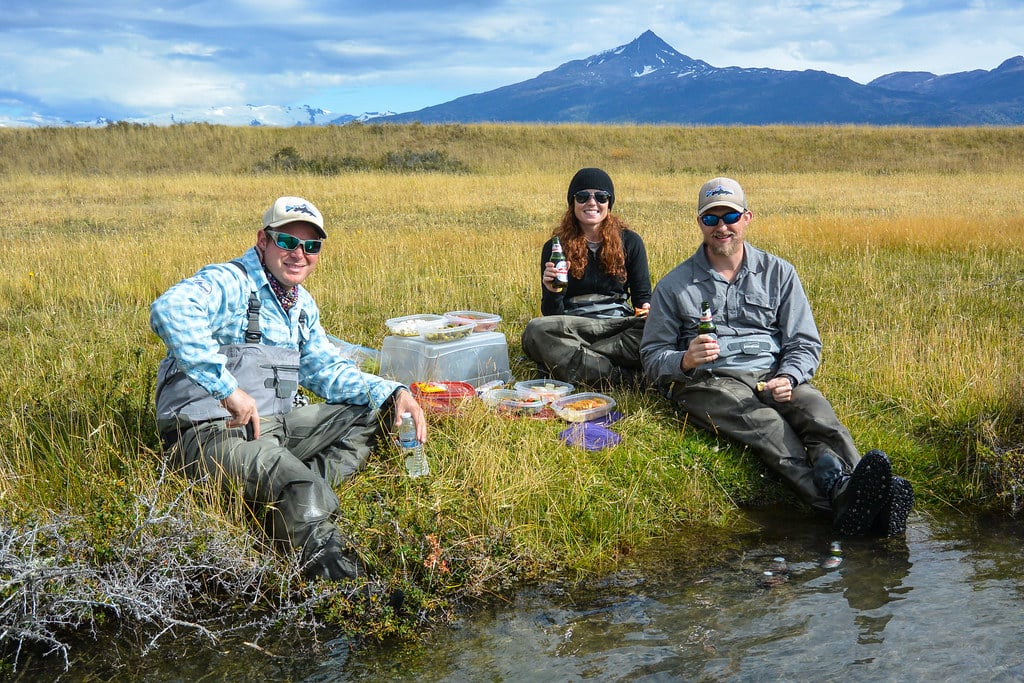 "Salud!"
"Salud!"We enjoyed our tasty sandwich and came back to the water. Sarah smiled at me: we still had hours to go. Suddenly, I heard her shout.
“I’ve got something”!
Martin got closer to her to help her get the fish. She raised the rod tip and pulled in line to steady the hook in the fish’s mouth. Martin had the net ready to put the fish once caught. The animal thrashed at the line and we crossed fingers as Sarah controlled the line’s tension. The fish finally appeared out of the water. A trout! A beautiful, heavy trout that made everyone shout heartily.
According to Martin, it was a brown trout, well known to stay below the water surface most of the time. That one was indeed surprisingly strong, and had probably reached the sea and come back to the river. Brandon, Sarah and Martin could not contain their joy. That was a tough fish, and Sarah had been brave enough to make a good strike. We admired the fish a few seconds before giving it back to Mother Nature. That was like a shot of energy: catching such a fish was a glorious moment, and we felt incredibly enthusiastic for the rest of the day. We did not wait long before the next strike.
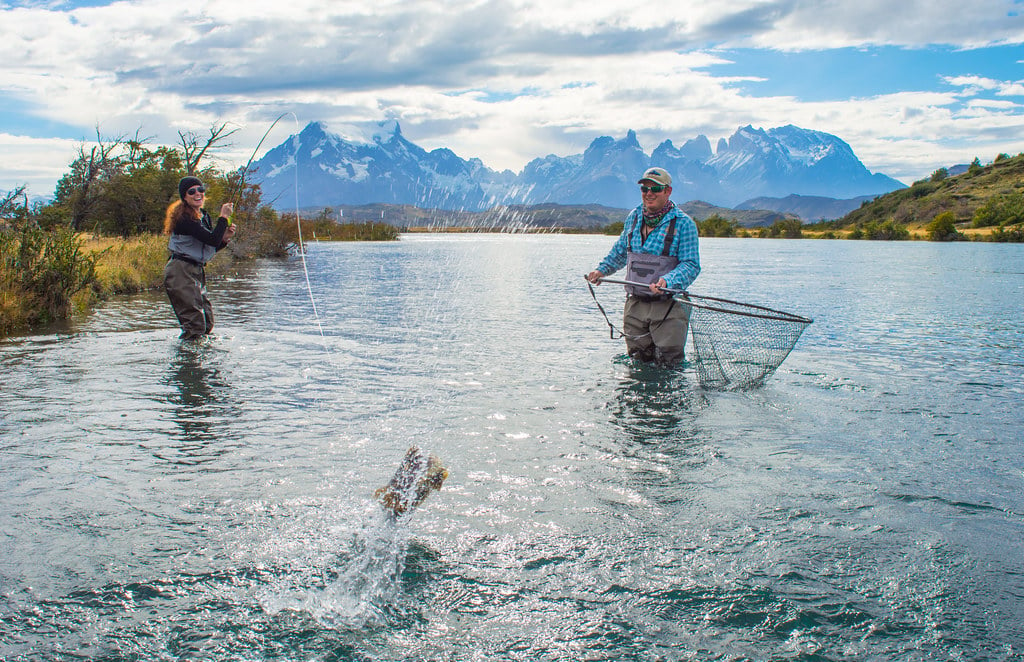 YES! First trout of the day...
YES! First trout of the day...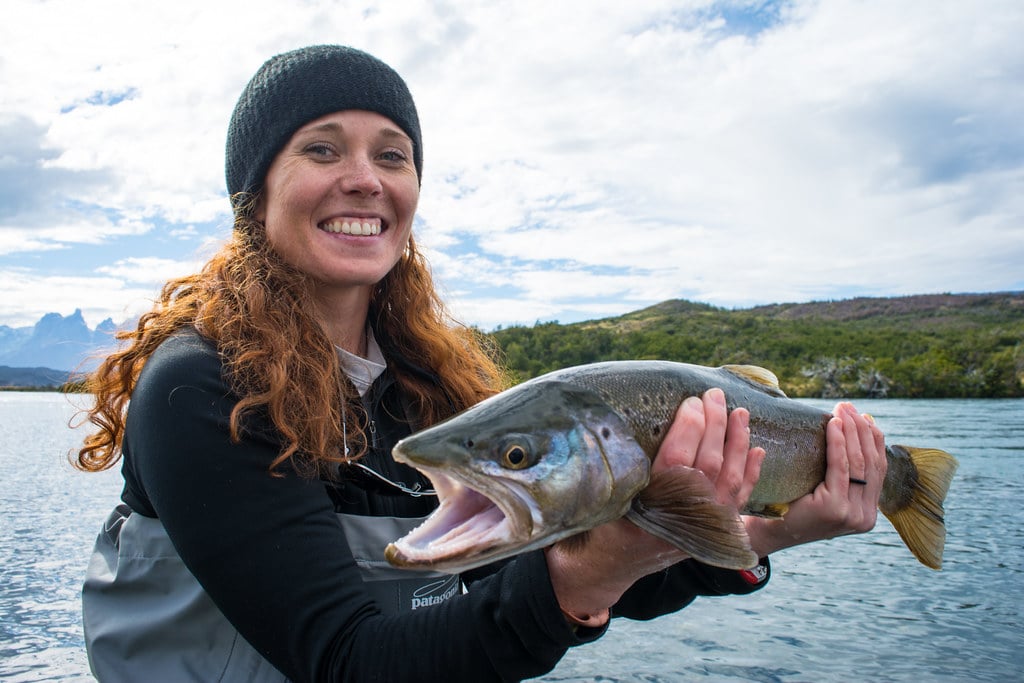 Sarah's happiness on her first strike...
Sarah's happiness on her first strike...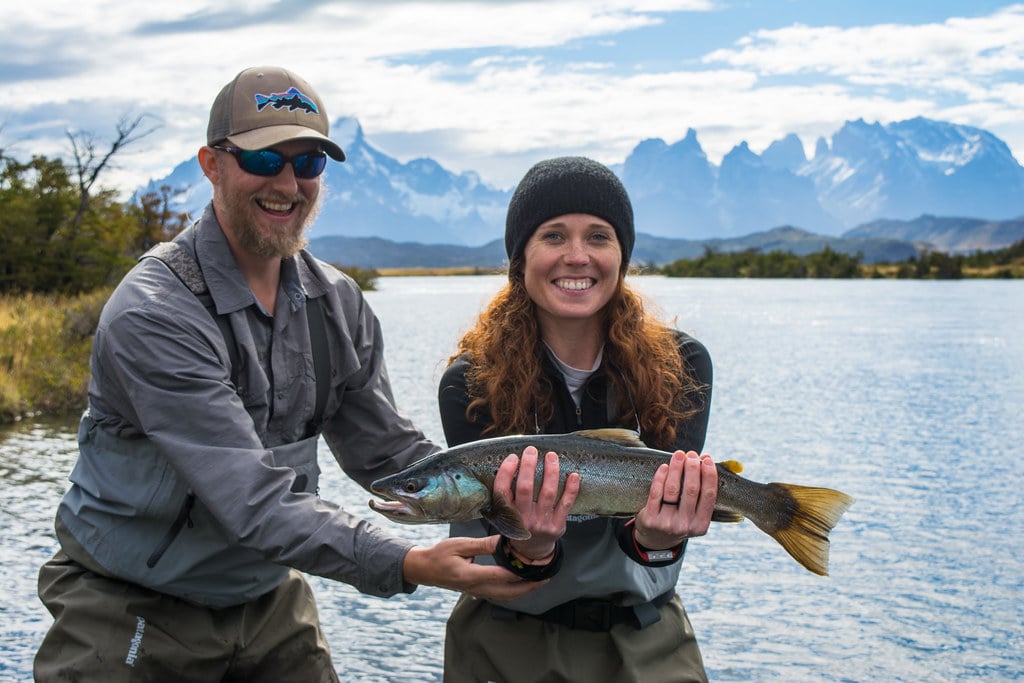 "Happiness is only real when shared" Christopher McCandless, Into the Wild
"Happiness is only real when shared" Christopher McCandless, Into the WildThe trout bit once again.
The fish jumped in a noisy splash. Sarah struck again! But that time, the trout was stronger and managed to escaped. Brandon could not believe it, and started fishing with an unbelievable passion. Even Martin started fishing without a break. Only 5 minutes after he dropped the line, we heard him calling out. It was his turn! He quietly pulled up the line, sure he would drag the fish without any problem. The trout struggled in vain. Martin made sure not to harm it, and held his trophy for ten seconds. Enough for the inevitable picture!
Martin made us realize how important experience was when fly fishing. If patience and good equipment are a big part of success, you need months, years of experience to be able to find the perfect equilibrium between the fish’s pressure and the strength you need to drag it. We moved to the last location, where the current was weaker. Here we could walk straight to the middle of the river and fish silently.
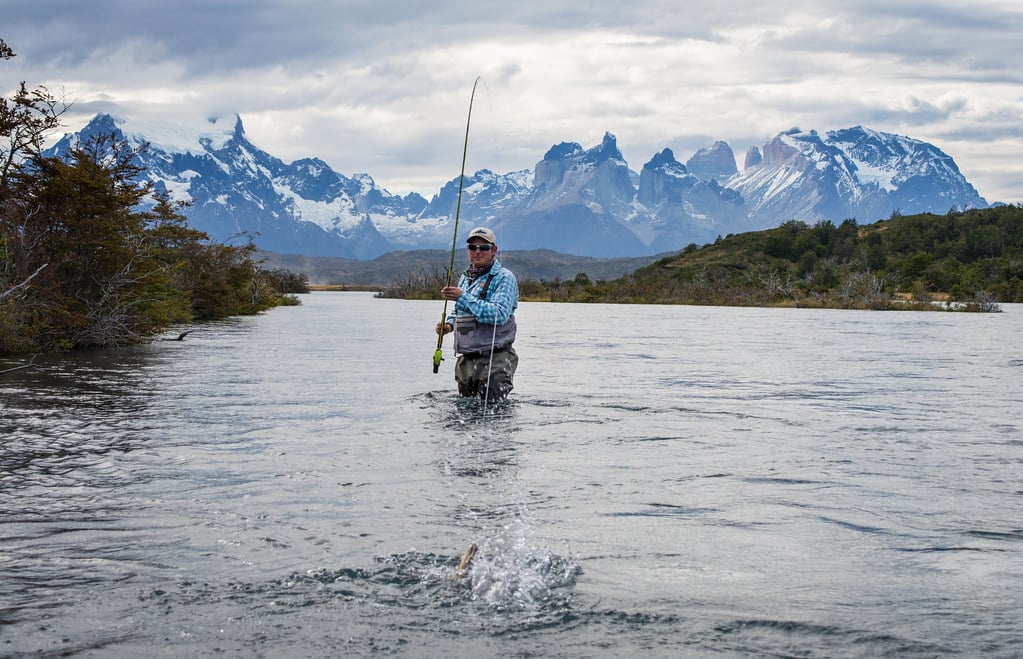 Here we go again!
Here we go again!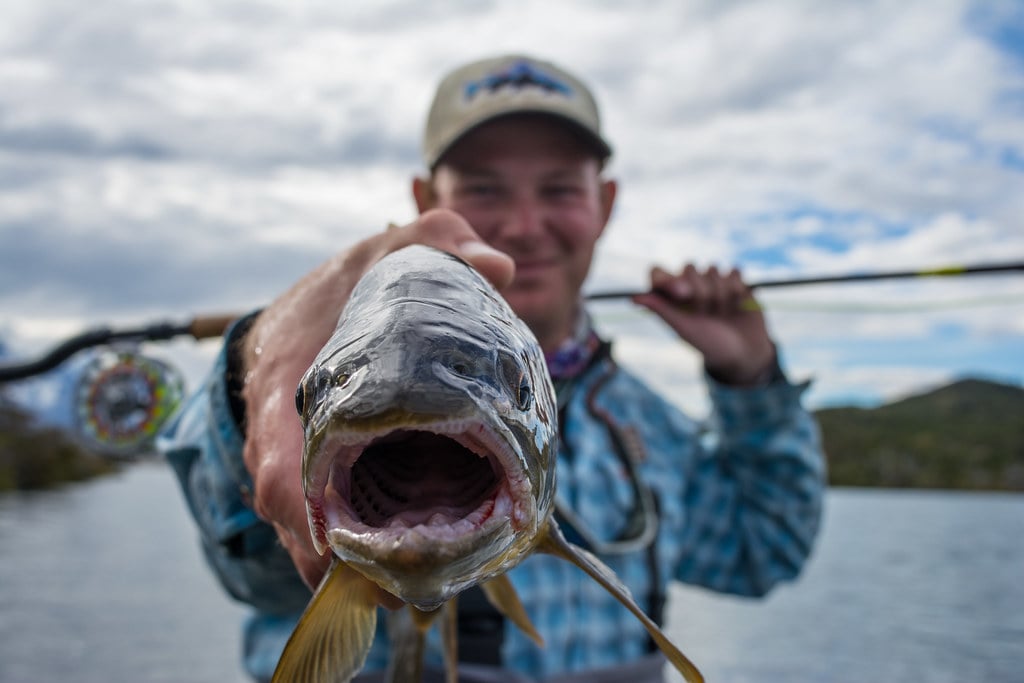 "The way to a man's heart is through his fly"
"The way to a man's heart is through his fly"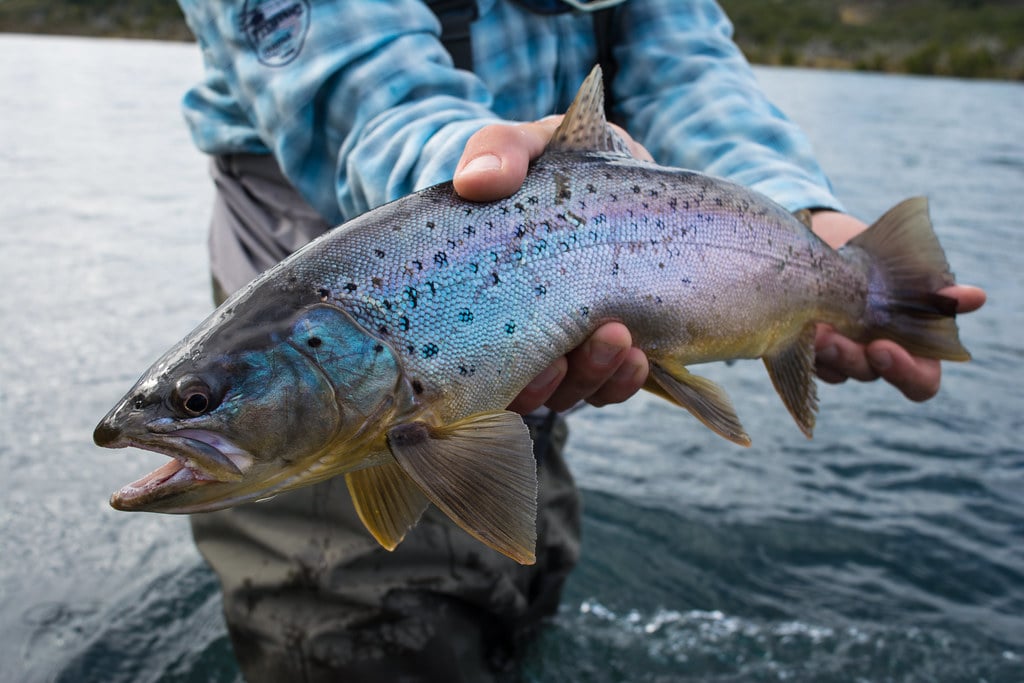 Everything has something blue in Torres del Paine, even the fishes!
Everything has something blue in Torres del Paine, even the fishes!As the sun was going down, we kept staring at the water. We willed them to bite, but at the time we enjoyed the present moment and the peacefulness of the river. We didn’t simply want to catch a fish: we wanted to repeat the movement, again and again, feeling the action in our arms with the line flying backwards and forwards. That was the wildest fishing experience we had ever had.
On the way back, we realized we had fallen in love with Patagonia.
The mountains seemed even more impressive. We had experienced a mysterious connection with the place. I did not get any fish, neither did Brandon. Catching the fish at all cost was not the aim of the day. We shared the joy of spending that day on the river together, with hope and happiness, which was way more important. As we reached EcoCamp, we gathered in the Community Domes for a luscious dinner with fellow travelers who had been trekking for 8 hours. They were amazed too, so we were pleased to share our experiences. We still had so much to do there! I was hoping to be back at the river the next day. Maybe to opt for traditional fishing, and realize how heavy the rod would seem compared to fly fishing! What do you think, Brandon, Sarah and Martin?
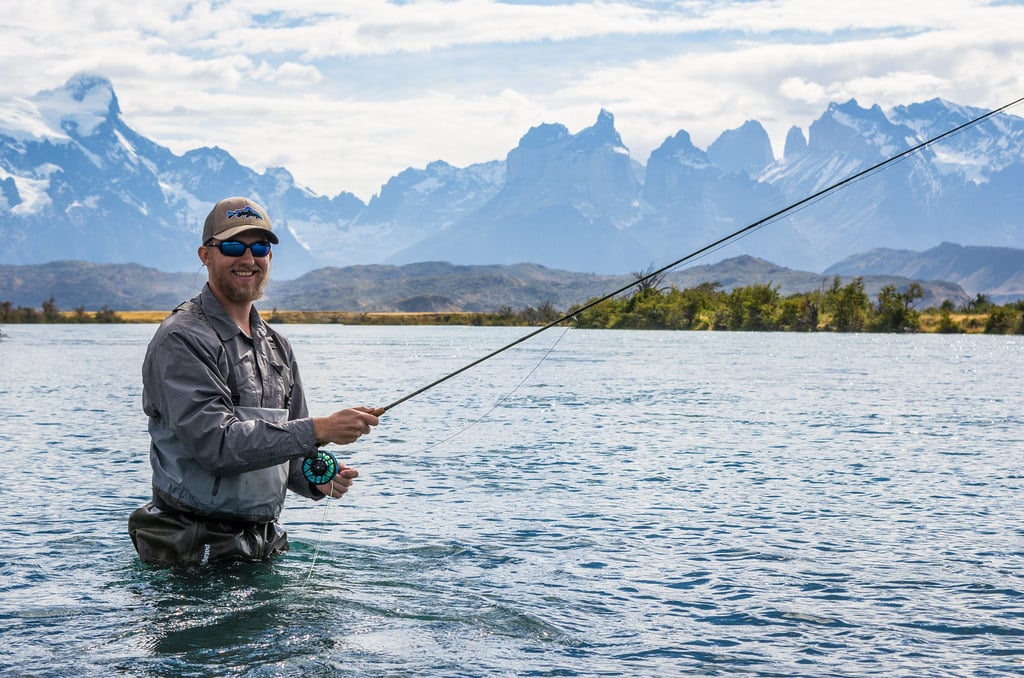 Brandon, determined to fish another salmon!
Brandon, determined to fish another salmon!Brandon Culberson, Charlotte, USA: I understand we’ve been lucky not to have wind, and I guess it’s better to have at least a bit of experience before fly fishing in Patagonia. The challenges are multiple: the river is quite high, the current is quite strong and the weather is changing. But you can overcome them thanks to a good guide, and have good opportunities to have strikes and enjoy the experience thanks to great equipment.
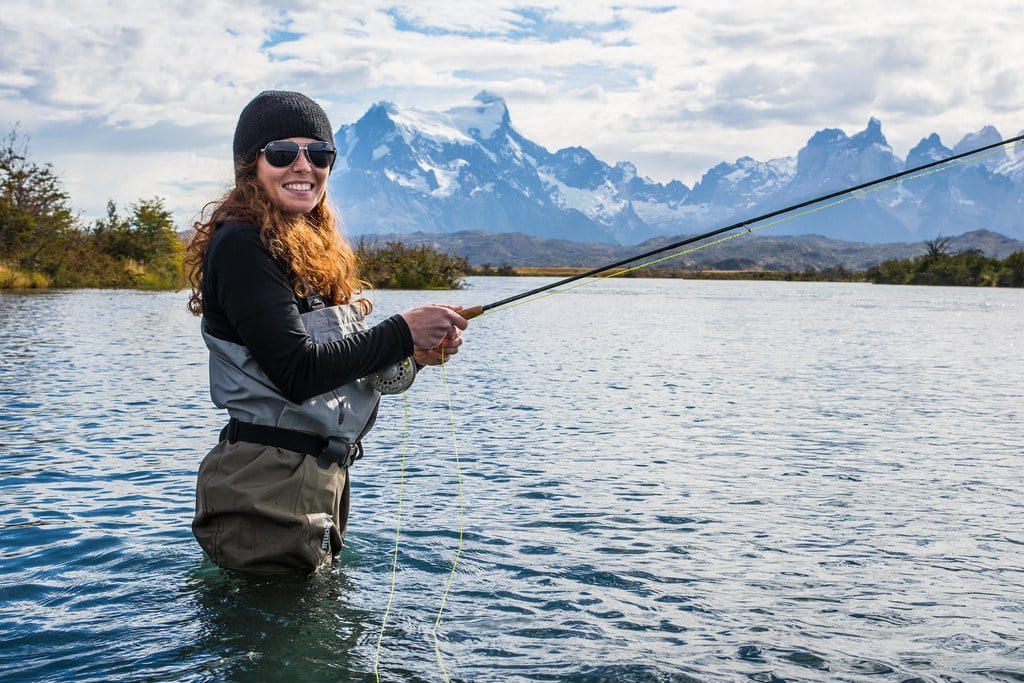 Sarah, resolute to strike one more time!
Sarah, resolute to strike one more time!Sarah Culberson, Charlotte, USA: Today was just us and the river. I guess it was the most picturesque river we had ever fished on. I did not even realize time was passing by: I could have spent 10 more hours on the river. Fly fishing constantly requires you to do something, making this type of fishing very active.
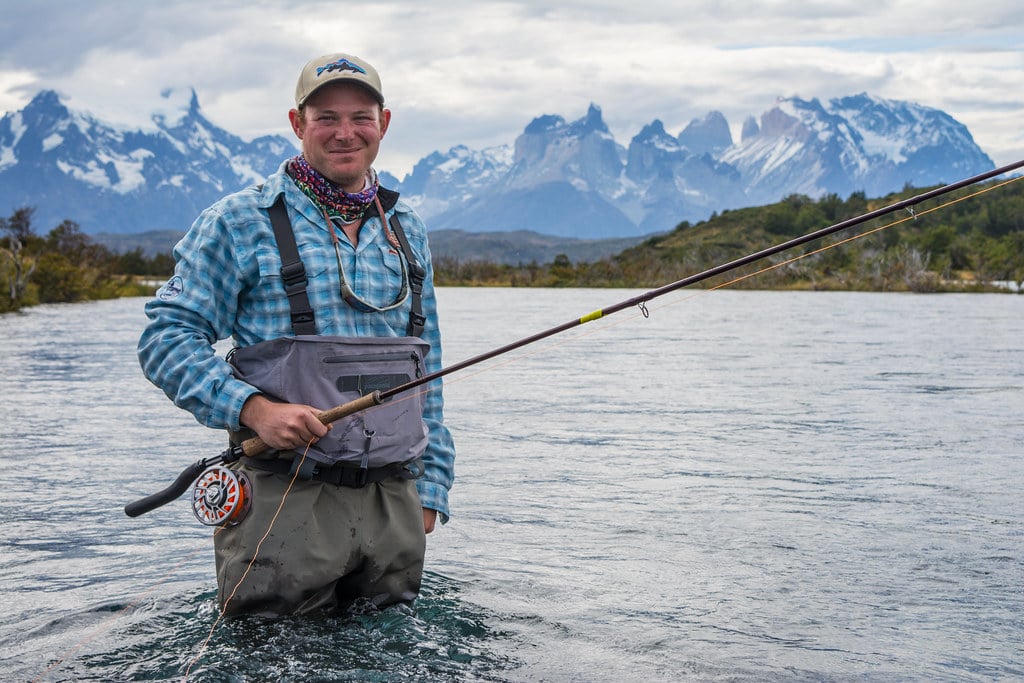 Martin: this guy already cought thousands of fishes, but it was not enough!
Martin: this guy already cought thousands of fishes, but it was not enough!Martin Saide, Santiago, Chile: My passion for fly fishing dates back a long time. I used to go fishing with my father on lakes and rivers. I remember when I saw someone do fly fishing for the first time: I was fascinated. I knew the equipment was a bit expensive, but I started investing in it and learnt a lot by myself. I finally took classes and ended up guiding here in 2013. Fly fishing in Torres Del Paine offers travelers another alternative to connect with the national park. We know there are slightly less fish in the Serrano River than in fishing spots you can find in Canada or Alaska. But here, you will be alone for real. You will see no boats, no walkers, probably no others anglers. Fishing is a pure, wild challenge. That’s the magic of fly fishing in Patagonia.”
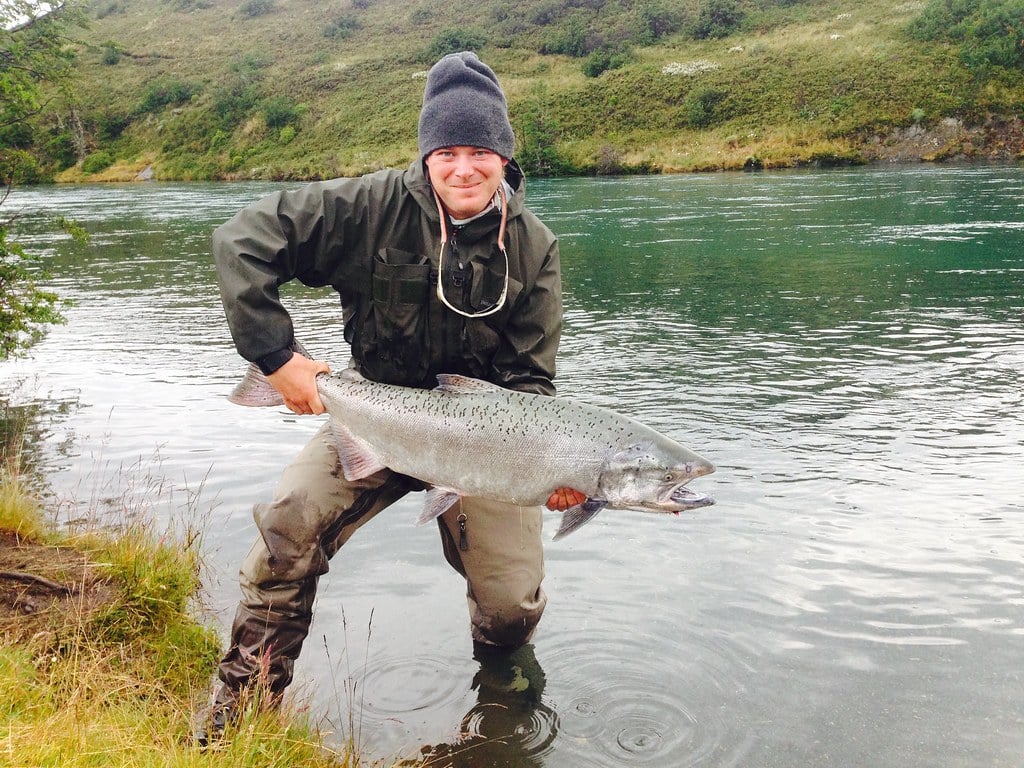 The fishermen's absolute dream: fishing the Patagonian salmon. Are you gonna compete with Martin and catch a 15kg/33lb salmon?
The fishermen's absolute dream: fishing the Patagonian salmon. Are you gonna compete with Martin and catch a 15kg/33lb salmon?Put on your waterproof radar and go Fly Fishing in some of the region's most pristine rivers!

